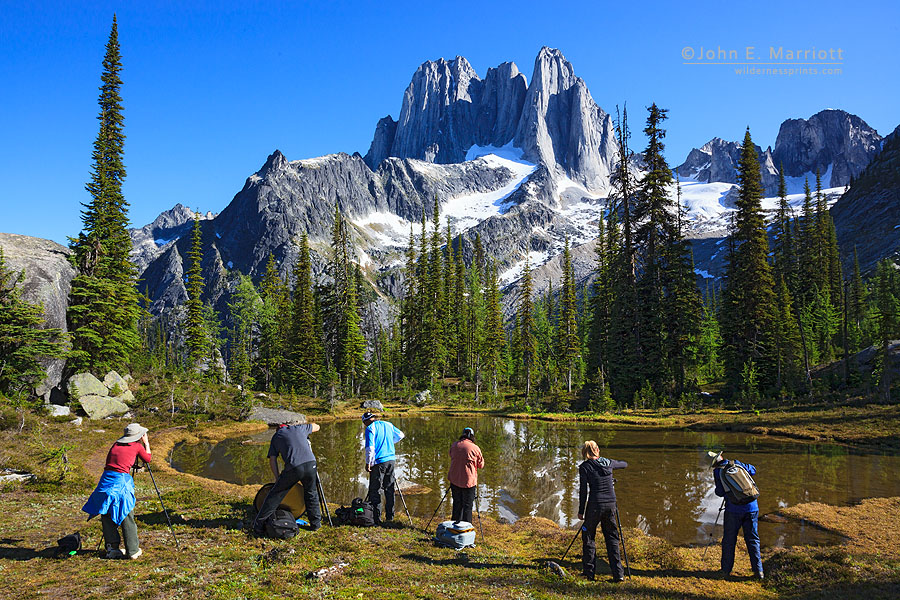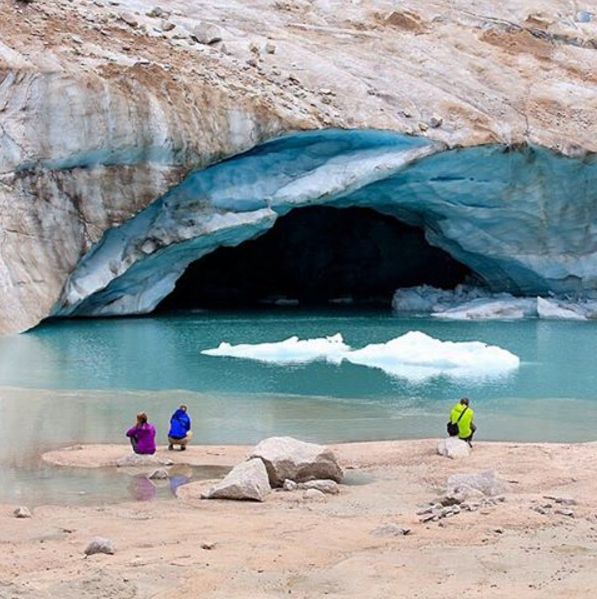Words by John E. Marriott, Wilderness photographer
1. Bring a camera along. As ridiculous as it sounds, it’s a key piece of advice for anyone wanting to capture great wilderness images. Roadside attractions are a dime a dozen, but what really separates a great landscape photographer from the pack is the need to get off the beaten track and get stunning images of hard-to-get-to locations. And while camera gear is heavy, I make sure I pack all the important photo equipment first on my backpacking excursions (Canon EOS 5D II body, 17-40mm lens, 70-200mm lens, and an assortment of filters) and skimp on other less critical stuff (like food, shelter and clothing).

2. And don’t forget a tripod. Twenty years ago bringing a tripod along was a serious addition to your backpacking gear, adding up to ten torturous pounds to your pack. Today, however, new carbon fibre tripods and ballheads mean that adding a tripod to your backpack can cost you less than 3 extra pounds (my backpacking tripod, a Velbon Sherpa Pro with an Acratech ballhead, is up to 5 feet tall, yet weighs in at a paltry 3.1 pounds). A tripod is key to allowing you to use all that camera gear you carted in with you, taking advantage of the golden hours at sunrise and sunset and using filters if you choose to, something that is much harder to do without a tripod being handy.
3. Scout it out. If you arrive at a backcountry campground before sunset, quickly scout out the locations that may work for a great sunset image or for the next morning’s sunrise shoot. Try to avoid scrambling around at the last second ‘chasing the light’. Watch for interesting foregrounds that may add to your images of those ‘trophy’ landscapes.

4. Ignore the weather forecast. Many of my most dramatic backcountry images are from freak snowstorms or giant storm clouds. So while I don’t recommend you venture out when the Storm of ’52 blows in, I do recommend you still get out there when it looks like a few of your days may be spotty for weather. Blue sky days are often the most dull in terms of photography and lighting.
5. Take a polarizer along. A polarizing filter can be your best friend in the backcountry, particularly a warming polarizer which can not only cut the glare of reflections and intensify your colours, but also add an overall vibrancy to your images. Yes, you’ll need to haul out your tripod (see #2), but the effects of using a polarizer in some of your wilderness scenes will give you that extra bit of pizzazz in the finished product, wowing your friends and family alike.
John E. Marriott is a professional nature photographer based in Canmore, Alberta, Canada who leads summer photography workshops at CMH. Learn more about the CMH Summer Photography Workshops here.